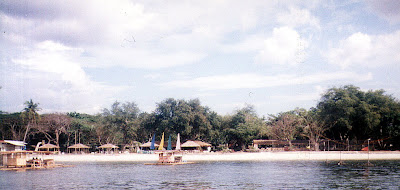After an early morning breakfast at the hotel, Alex, Rick, Jess and I, together with Boyet and Susan, all left on our van for a familiarization tour of Naga City’s favorite getaway from the hustle and bustle of the city: Consoscep Mountain Resort at the foot of Mt. Isarog in Tigaon. Accompanying us as guides were Ms. Melba Niebres and Ms. Shiela Clara of the Camarines Sur Tourism Office in Pili. The trip, via the Jose Fuentabella Highway, was to take all of an hour. Past the towns of Pili and Ocampo, we turned left at the intersection leading to the resort. The 8-km. uphill drive was scenic all the way as we passed abaca plantations and verdant forests. Turning off our airconditioning, we instead savored the cool caress of its Baguio-like mountain air. Along the way, we also passed the Parks and Wildlife Office. Nabontolan Springs are located within its grounds.
 |
| Consocep Resort |
.jpg) |
| Mt. Isarog |
 |
| Entrance to the resort |
 |
| Tumaguiti Falls |
 |
| Kawa-Kawa Falls |
 |
| Bulalacao Falls |
.jpg) |
| A treehouse at the resort |







































